
The Ainu are an ethnic group comprising related Indigenous peoples who are native to northern Japan, including Hokkaido and Northeast Honshu, as well as the land surrounding the Sea of Okhotsk, such as Sakhalin, the Kuril Islands, the Kamchatka Peninsula, and the Khabarovsk Krai; they have occupied these areas known to them as "Ainu Mosir", since before the arrival of the modern Japanese and Russians. These regions are often referred to as Ezochi (蝦夷地) and its inhabitants as Emishi (蝦夷) in historical Japanese texts.

Sakhalin is an island in Northeast Asia. Its north coast lies 6.5 km (4.0 mi) off the southeastern coast of Khabarovsk Krai in Russia, while its southern tip lies 40 kilometres (25 mi) north of Japan's Hokkaido. A marginal island of the West Pacific, Sakhalin divides the Sea of Okhotsk to its east from the Sea of Japan to its southwest. It is administered as part of Sakhalin Oblast and is the largest island of Russia, with an area of 72,492 square kilometres (27,989 sq mi). The island has a population of roughly 500,000, the majority of whom are Russians. The indigenous peoples of the island are the Ainu, Oroks, and Nivkhs, who are now present in very small numbers.
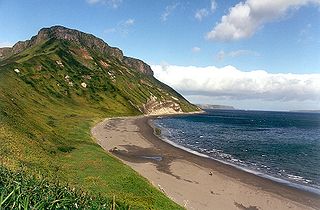
The Kuril Islands or Kurile Islands are a volcanic archipelago administered as part of Sakhalin Oblast in the Russian Far East. The islands stretch approximately 1,300 km (810 mi) northeast from Hokkaido in Japan to Kamchatka Peninsula in Russia, separating the Sea of Okhotsk from the north Pacific Ocean. There are 56 islands and many minor islets. The Kuril Islands consist of the Greater Kuril Chain and, at the southwest end, the parallel Lesser Kuril Chain. They cover an area of around 10,503.2 square kilometres (4,055.3 sq mi), with a population of roughly 20,000.
Nivkh, or Gilyak, or Amuric, is a small language family, often portrayed as a language isolate, of two or three mutually unintelligible languages spoken by the Nivkh people in Russian Manchuria, in the basin of the Amgun, along the lower reaches of the Amur itself, and on the northern half of Sakhalin. "Gilyak" is the Russian rendering of terms derived from the Tungusic "Gileke" and Manchu-Chinese "Gilemi" for culturally similar peoples of the Amur River region, and was applied principally to the Nivkh in Western literature.
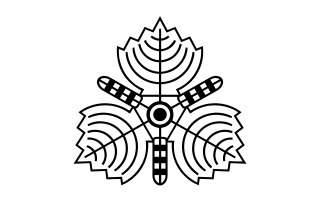
Karafuto Agency, from 1943 Karafuto Prefecture, commonly known as South Sakhalin, was a part of the Empire of Japan on Sakhalin, it was part of the gaichi from 1907 to 1943 and later a prefecture as part of the naichi until 1945.

Ainu, or more precisely Hokkaido Ainu, is a language spoken by a few elderly members of the Ainu people on the northern Japanese island of Hokkaido. It is a member of the Ainu language family, itself considered a language family isolate with no academic consensus of origin. It is classified as Critically Endangered by the UNESCO Atlas of the World's Languages in Danger.
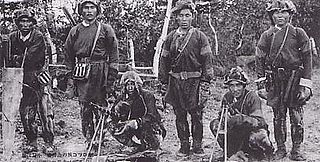
Oroks, sometimes called Uilta, are a people in the Sakhalin Oblast in Russia. The Orok language belongs to the Southern group of the Tungusic language family. According to the 2002 Russian census, there were 346 Oroks living in Northern Sakhalin by the Okhotsk Sea and Southern Sakhalin in the district by the city of Poronaysk. According to the 2010 census there were 295 Oroks in Russia.

Yuri (Iurii) is an uninhabited island in the Habomai Islands sub-group of the Kuril Islands chain in the south of the Sea of Okhotsk, northwest Pacific Ocean. The island is uninhabited from 1945 after the Soviet invasion of the Kuril Islands and deportation of Japanese to Hokkaido. It is currently administered as part of Yuzhno-Kurilsky District, Sakhalin Oblast of the Russian Federation. Its name is derived from the Ainu language word for cormorant.
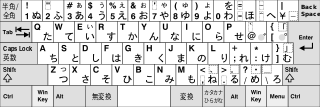
The most widely spoken language in Japan is Japanese, which is separated into several dialects with Tokyo dialect considered Standard Japanese.
Uilta is a Tungusic language spoken in the Poronaysky and Nogliksky Administrative Divisions of Sakhalin Oblast, in the Russian Federation, by the Uilta people. The northern Uilta who live along the river of Tym’ and around the village of Val have reindeer herding as one of their traditional occupations. The southern Uilta live along the Poronay near the city of Poronaysk. The two dialects come from the northern and eastern groups, however, they have very few differences.

Bronisław Piotr Piłsudski was an ethnologist who researched the Ainu people after he was exiled by Tsar Alexander III of Russia to the Far East.
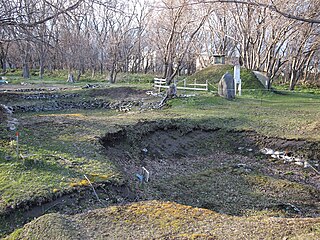
The Okhotsk culture is an archaeological coastal fishing and hunter-gatherer culture that developed around the southern coastal regions of the Sea of Okhotsk, including Sakhalin, northeastern Hokkaido, and the Kuril Islands during the last half of the first millennium to the early part of the second. The Okhotsk are often associated to be the ancestors of the Nivkhs, while others argue them to be identified with early Ainu-speakers. It is suggested that the bear cult, a practice shared by various Northern Eurasian peoples, the Ainu and the Nivkhs, was an important element of the Okhotsk culture but was uncommon in Jomon period Japan. Archaeological evidence indicates that the Okhotsk culture proper originated in the 5th century AD from the Susuya culture of southern Sakhalin and northwestern Hokkaido.

The Ainu in Russia are an Indigenous people of Siberia located in Sakhalin Oblast, Khabarovsk Krai and Kamchatka Krai. The Russian Ainu people, also called Kurile, Kamchatka's Kurile or Eine, can be subdivided into six groups.

Take Asai (浅井タケ) or Tahkonanna was the last fluent speaker of the Sakhalin Ainu language. She was born in Otasu village on the West coast of Sakhalin Island, and moved to Rayciska (Raichishika) during her childhood. After World War II she was relocated to Hokkaido and toward the end of her life lived in an old-age home in Monbetsu, Hidaka, Hokkaido. She served as an informant with the Piłsudski Research Project and other projects until her death in 1994.

This is a bibliography of works on the Ainu people of modern Japan and the Russian Far East.

Chiyo Nakamura was a Japanese Nivkh shaman, craftswoman, performer, and writer of Nivkh folklore and songs.

The Ainu languages, sometimes known as Ainuic, are a small language family, often regarded as a language isolate, historically spoken by the Ainu people of northern Japan and neighboring islands.
Ainu culture is the culture of the Ainu people, from around the 13th century to the present. Today, most Ainu people live a life superficially similar to that of mainstream Japanese people, partly due to cultural assimilation. However, while some people conceal or downplay their Ainu identity, Ainu culture is still retained among many groups. The Ainu way of life is called Ainupuri in the Ainu language. The unique Ainu patterns and oral literature have been selected as features of Hokkaido Heritage.

The Sakhalin Regional Museum is a museum in Yuzhno-Sakhalinsk on the Russian island of Sakhalin. It is the largest museum in the Sakhalin Oblast. The Museum collects, researches, and displays materials relating to the natural history, archaeology, history, and ethnography of the region.

The Sea of Okhotsk Coast is split into natural major parts according to the delineation of the Sea of Okhotsk: its northwestern part, which is part of the mainland of Eastern Siberia, the west coast of the Kamchatka Peninsula (Russia), the coasts of the Kuril Islands, the northeastern coast of Hokkaido (Japan), the north and east coasts of Sakhalin (Russia), as well as the coasts of the inner islands.


















